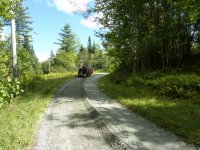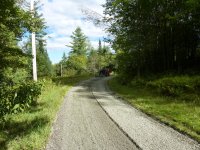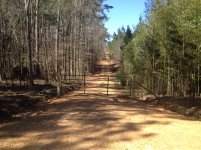UncleBuck1
Silver Member
- Joined
- Dec 2, 2012
- Messages
- 109
- Location
- Baton Rouge, LA
- Tractor
- 2011 MF 2660HD; 1964 JD 4020 (may she rest in peace)
As I posted in a recent thread I started, I have a little over a miles of gravel road I need to maintain and I'm just making matters worse with my box blade.
About half of the road follows a property line rather than the natural contours of the land and is fairly hilly. After a couple of recent heavy rains water is starting to run down the middle of the road and carry gravel with it and I want to address this ASAP before things get worse and I have to add gravel.
A friend has a Grade Master LPGS that I can borrow before commiting to a purchase, and I need some advice on setup. Specifically, do I need to tilt the LPGS? If I just run it flat will the angled blades move enough gravel to the center to restore the crown?
EDIT: One detail that may (or may not) make a difference: the 3-point lift links of on my tractor have a "float" setting
Brian
About half of the road follows a property line rather than the natural contours of the land and is fairly hilly. After a couple of recent heavy rains water is starting to run down the middle of the road and carry gravel with it and I want to address this ASAP before things get worse and I have to add gravel.
A friend has a Grade Master LPGS that I can borrow before commiting to a purchase, and I need some advice on setup. Specifically, do I need to tilt the LPGS? If I just run it flat will the angled blades move enough gravel to the center to restore the crown?
EDIT: One detail that may (or may not) make a difference: the 3-point lift links of on my tractor have a "float" setting
Brian
Last edited:



